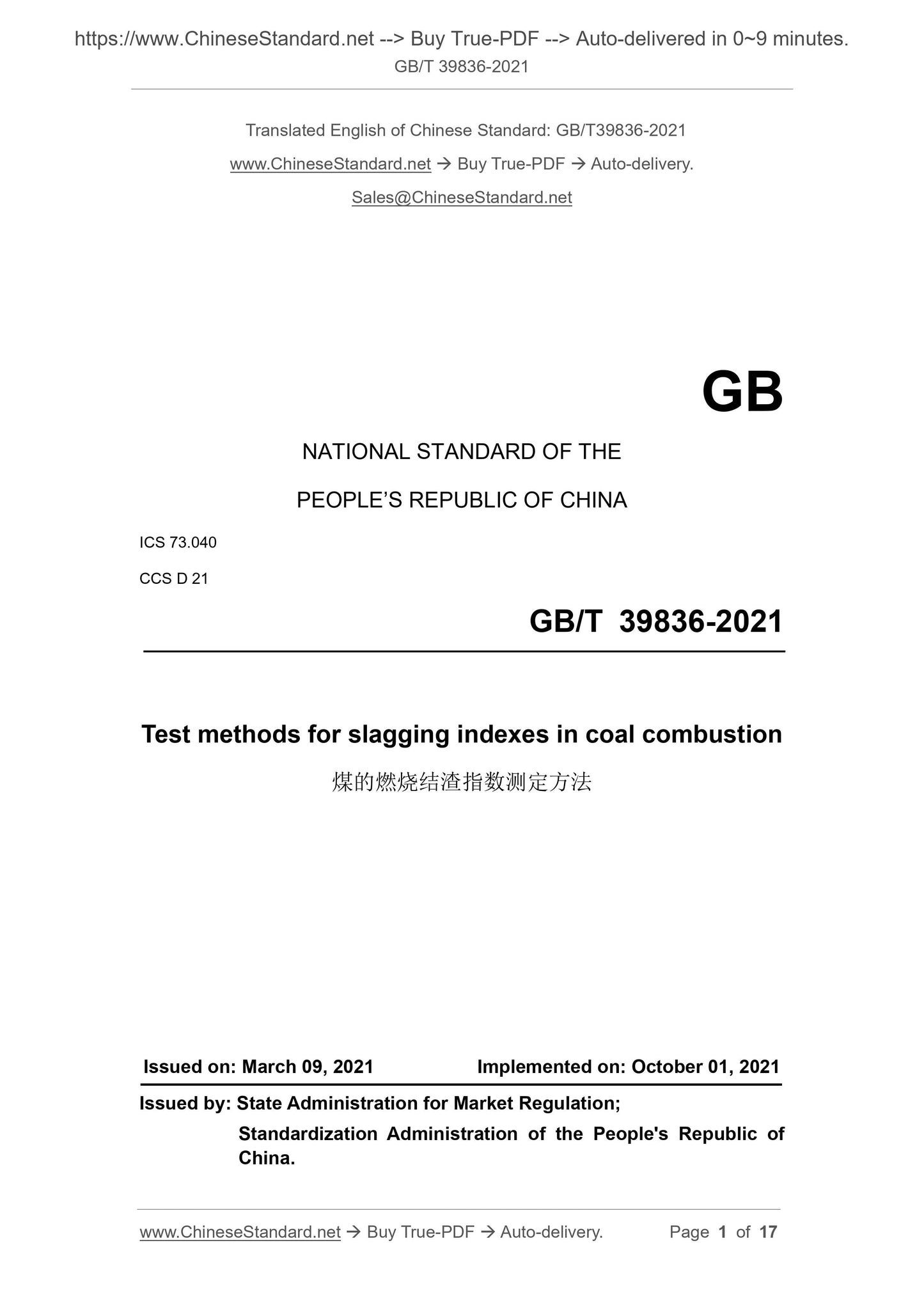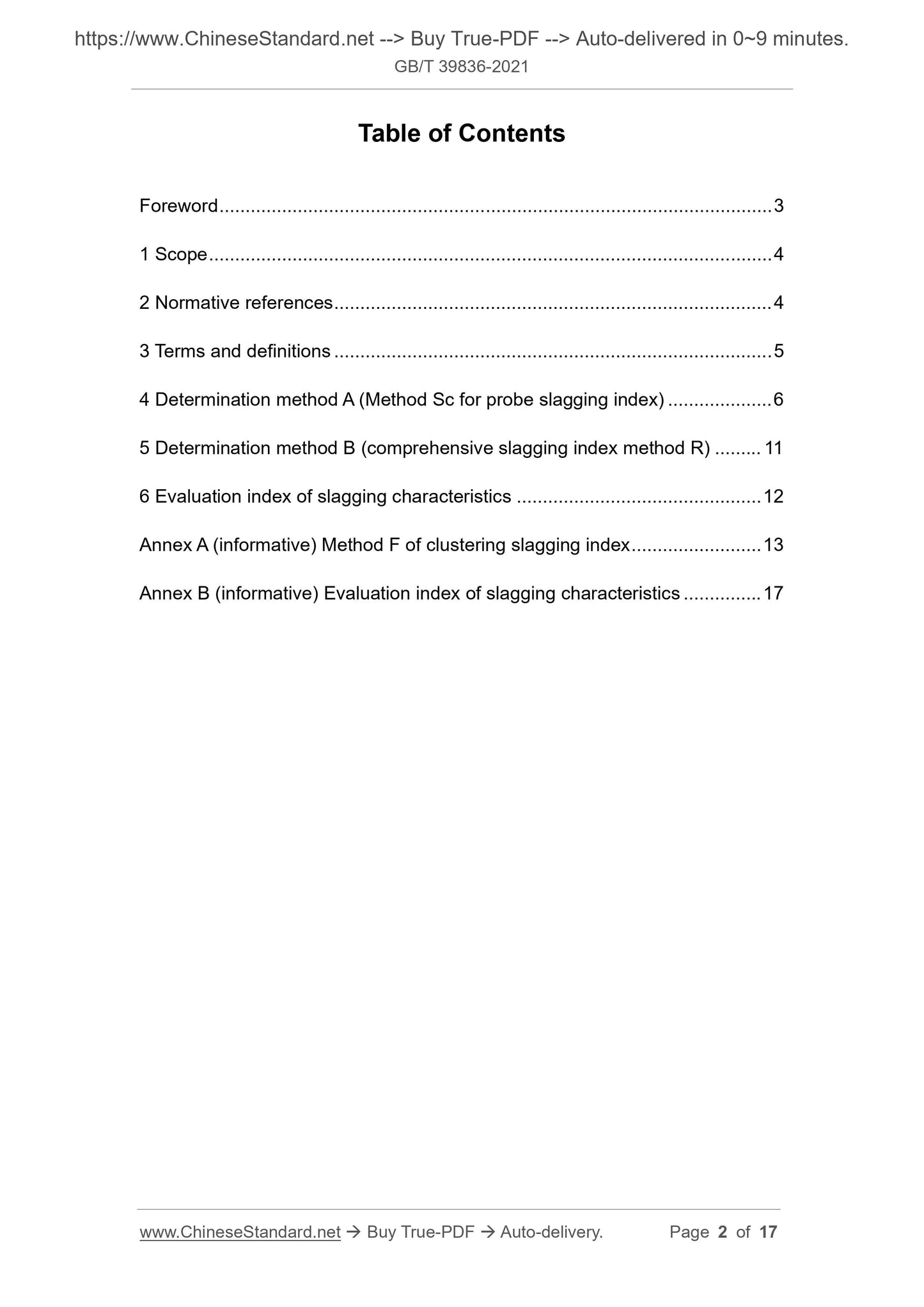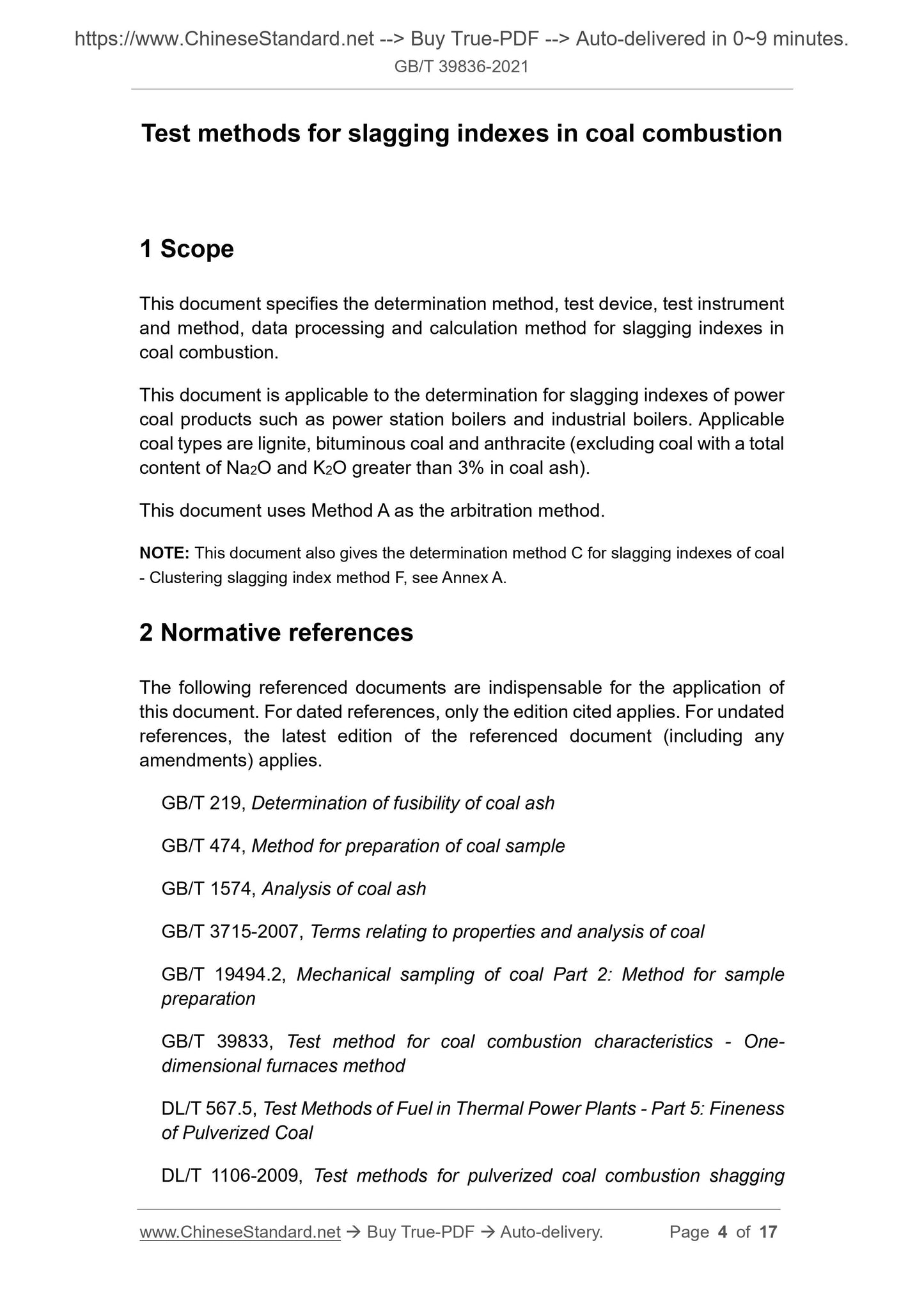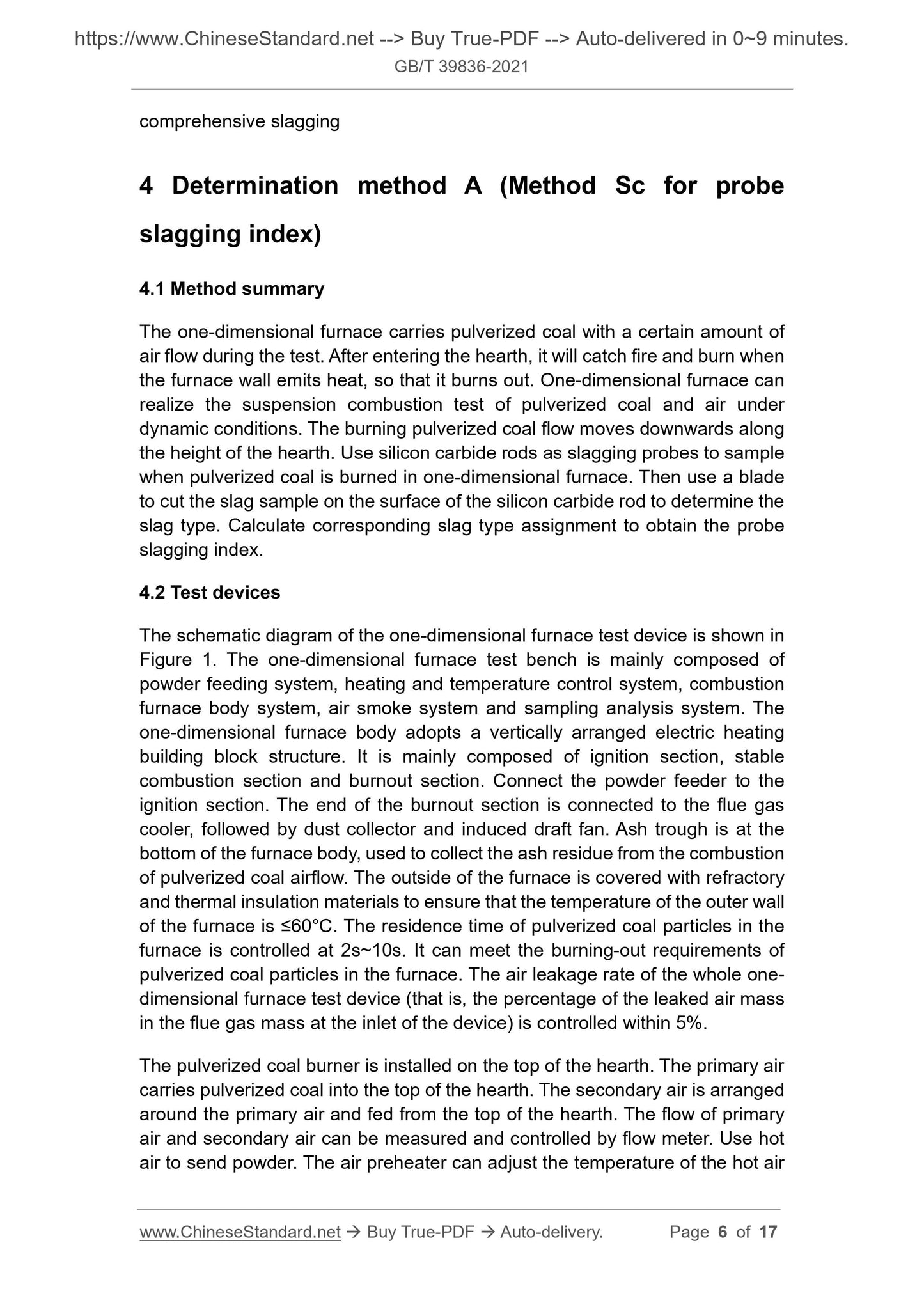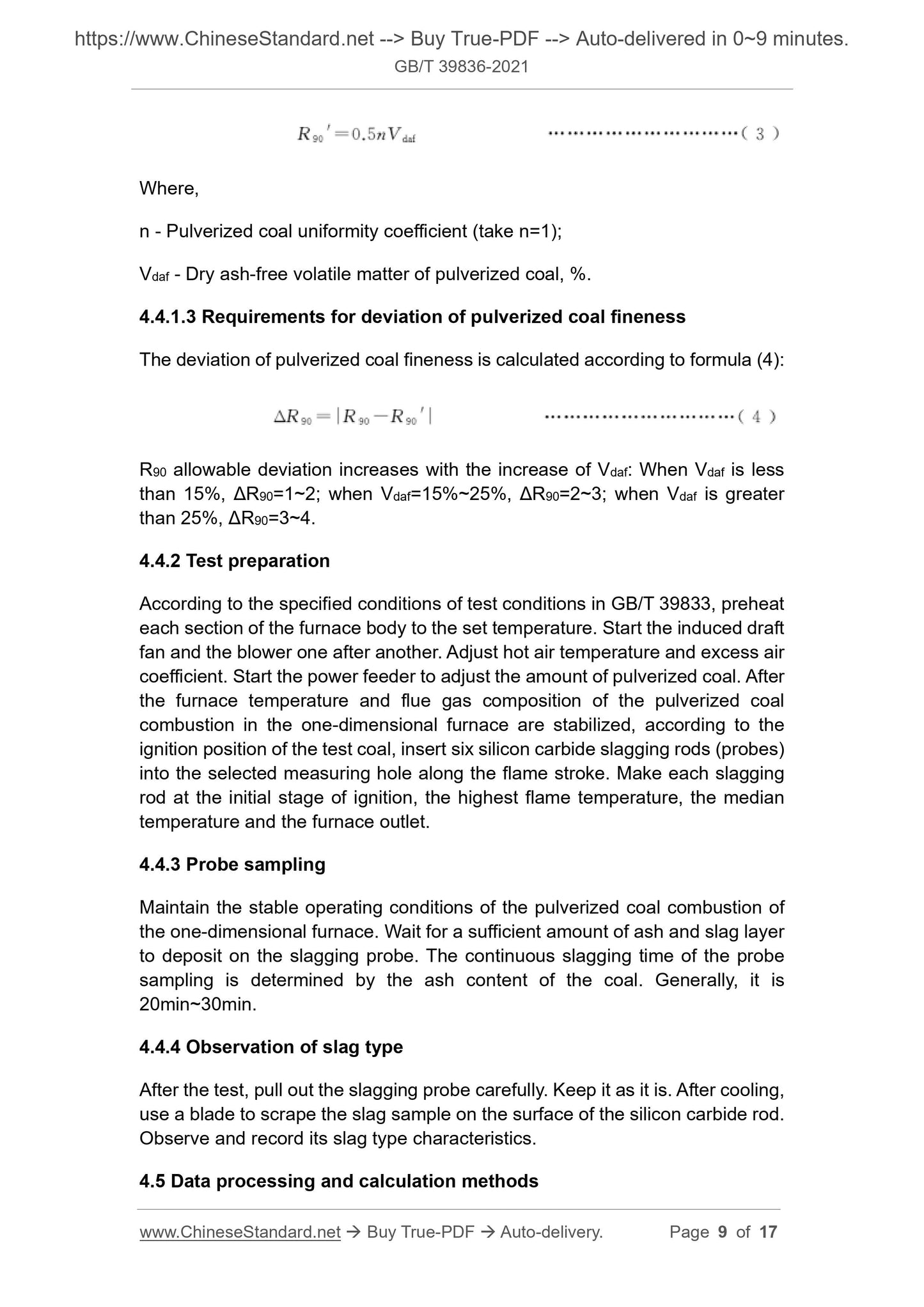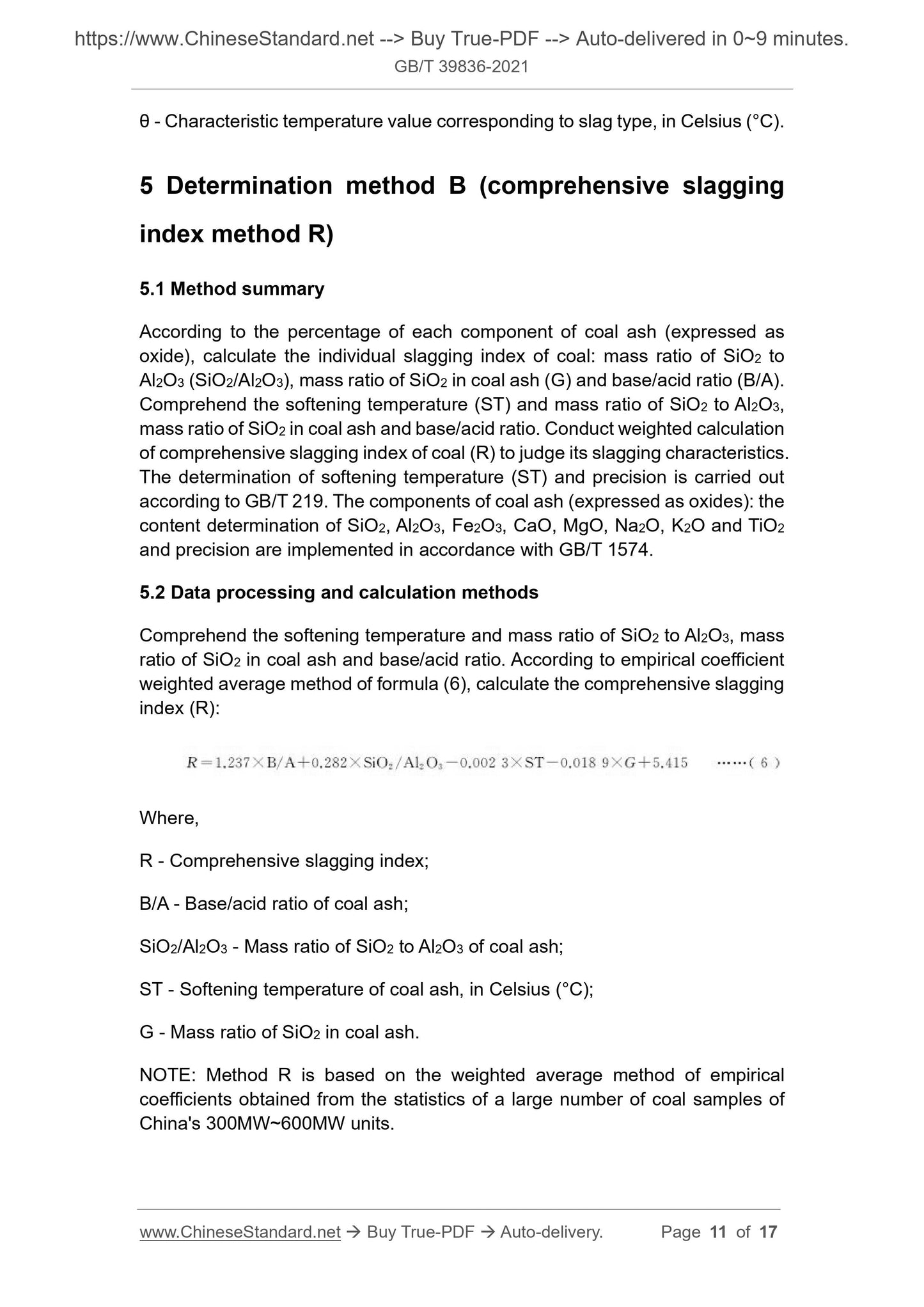1
/
of
6
www.ChineseStandard.us -- Field Test Asia Pte. Ltd.
GB/T 39836-2021 English PDF (GB/T39836-2021)
GB/T 39836-2021 English PDF (GB/T39836-2021)
Regular price
$205.00
Regular price
Sale price
$205.00
Unit price
/
per
Shipping calculated at checkout.
Couldn't load pickup availability
GB/T 39836-2021: Test methods for slagging indexes in coal combustion
Delivery: 9 seconds. Download (and Email) true-PDF + Invoice.Get Quotation: Click GB/T 39836-2021 (Self-service in 1-minute)
Newer / historical versions: GB/T 39836-2021
Preview True-PDF
Scope
This document specifies the determination method, test device, test instrumentand method, data processing and calculation method for slagging indexes in
coal combustion.
This document is applicable to the determination for slagging indexes of power
coal products such as power station boilers and industrial boilers. Applicable
coal types are lignite, bituminous coal and anthracite (excluding coal with a total
content of Na2O and K2O greater than 3% in coal ash).
This document uses Method A as the arbitration method.
NOTE: This document also gives the determination method C for slagging indexes of coal
- Clustering slagging index method F, see Annex A.
Basic Data
| Standard ID | GB/T 39836-2021 (GB/T39836-2021) |
| Description (Translated English) | Test methods for slagging indexes in coal combustion |
| Sector / Industry | National Standard (Recommended) |
| Classification of Chinese Standard | D21 |
| Word Count Estimation | 14,172 |
| Issuing agency(ies) | State Administration for Market Regulation, China National Standardization Administration |
Share
